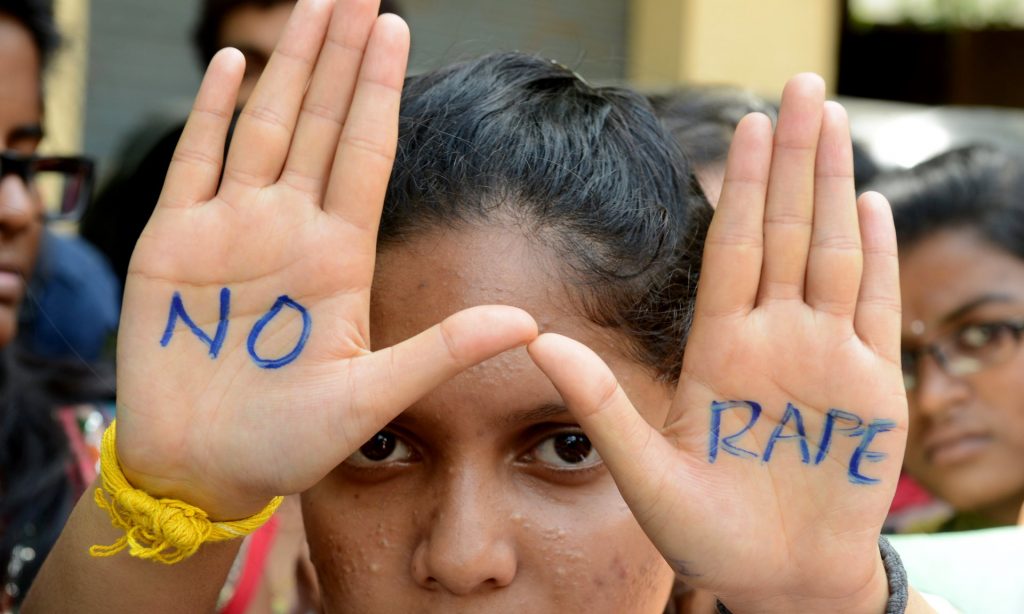
Photograph: Noah Seelam/AFP/Getty Images
Another horrific rape and murder in India, this time in the southern state of Kerala, in Perumbavoor, Ernakulam. At least 30 injuries were found on the victim’s body; her intestines were eviscerated and she had bite marks on her back.
This – the Jisha case – bears a chilling similarity to the Nirbhaya case, the gang rape of a paramedic student aboard a bus in Delhi in December 2012. But while the latter case received extensive and forceful attention and media coverage, both national and international, Jisha’s rape was followed by an eerie silence.
The gang rape of Nirbhaya occurred in the capital and was on the nation’s radar. However, Jisha’s rape and murder took place in India’s backwaters. There is a stark difference in how rapes in the country’s teeming metropolises are investigated and reported compared with those in smaller cities, towns and villages.
Even after the 2012 Delhi rape, when the world reported a deluge of protests in India, these were largely confined to urban areas, despite the fact that more rapes occur in rural and small-town India.
According to the National Crime Records Bureau, every day 92 women are raped in India. In 2012, of the 24,923 rapes reported nationwide, 3,035 occurred in the large cities. The number of reported rapes elsewhere in the country was more than seven times higher (despite some cases arguably going unreported) than the number of those reported in the main cities. But the police seem to be selective about what they investigate. Jisha was a Dalit, a caste formerly known as “untouchables”.
In Jisha’s case, the police complaint was allegedly made by her mother and neighbours on the day of the murder – 28 April. For four days the police did nothing, effectively making the crime “invisible”. And it would probably have remained invisible were it not for the protests by Jisha’s law college classmates and teachers, who brought the case to the media’s attention.
The police responded to accusations of negligence by branding Jisha’s mother mentally unstable to discredit her version of the harassment that preceded the crime. However, as a result of media coverage, politicians – who were in the midst of campaigning for state elections – got to know of the case and tried to get political mileage out of it.
It was only on 21 June, almost two months after the crime, that the first arrest was made.
The police response to Jisha’s rape and murder was a result of caste, gender bias and the entitlement culture that exists in India. It is striking that such extreme bias occurs in Kerala, a state that has the country’s highest rate of literacy – 94%.
Kerala’s conviction rate for all crimes is high, at 77%, but this does not translate into a proportionate conviction rate for crimes against women. Across India, if women are abused, they become a repository of shame. Family pressure often leads them to abandon their complaints or reach a compromise with out-of-court settlements. This sends a message to criminals that they can act with impunity.
In the documentary India’s Daughter, Nirbhaya’s rapist, on death row, chillingly recounts that they raped her savagely to “teach her a lesson because she tried to resist them”. Jisha’s rapist gave the same reason. The incidents occurred in different parts of India, but they reflect a mindset that is terrifyingly common. And India can’t afford to be geographically selective if it is to tackle these shocking crimes.

